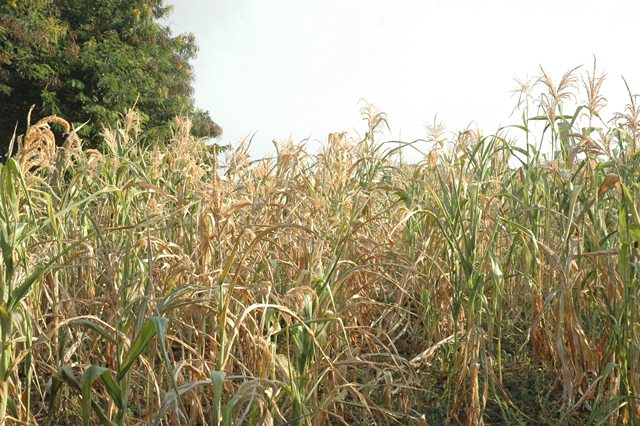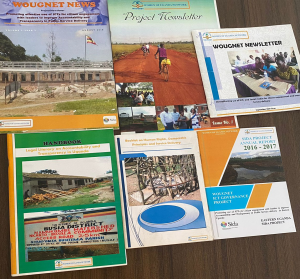Agricultural production that rely on rainfall faces the highest risk compared to that of irrigation. Rainfall enhances production and productivity in the sector by making crops and vegetation to grow, animals and fish to have enough water for livelihood and flourish. Animals for example depend largely on vegetation while fish and crops production and productivity are largely determined by rainfall availability. According to ministry of agriculture sector strategic plan, the vision for the sector is to ensure a competitive, profitable and sustainable agriculture. However, this goal is highly affected by climate change as farmers continue to struggle due to over reliance on rain fed agriculture.
According to Uganda Meteorologist Authority rainfall forecast for northern Uganda, on average rainfall is always projected to be continuous with June and July expected to always have the highest amount of rainfall received in the entire year.
Between 2016-2017, Lira Metrology Center received a total amount of rainfall of 1278 millimeters which is the highest in Country but below the national average rainfall for the year. This unreliability and ineffectiveness of rainfall in the region greatly affected famers right from the planning time through planting, maintaining, harvesting, storing and marketing of their produce.
Contrary to the forecast in the region of high rainfall for the month of June and July that used to be the second planting seasons for many farmers, there was no rain and many farmers rush to base on the forecast and reports issued by Weather forecast team, the result is that many farmers had planted their seeds and due to the nature of crops planted by many farmers in the northern for example beans, cassava, peas, maize, sunflower and soya beans do not survive on prolonged dry spell period.
The likely impact is lack of water for the crops, shortage of pasture for the animals, increased incidence of livestock and crop pest and disease and the end result is increased food shortage and reduction in famers income.
In order to mitigate this trend, the government should ensure access to water reservoirs and irrigation practices to both subsistence and commercial famers in Uganda but this effort is compromised due to land fragmentation and disorganization among the farmers themselves.
In order to respond to this challenge, ministry of agriculture strategic sector plan sets am ambitious targets of increase water for the agricultural production, purchasing equipment to increase water coverage, recruiting and training of operators, assessing, designing and constructing 250 valley tanks and dams, training of famers on how to harvest water for irrigation with a budget of only 387.85 billion.
In this analysis, national budget 2018/2019 priority on increasing production and productivity according to the framework does not consider what ministry of agriculture takes to be priority number one.
The national budget framework aims at ensuring inter and intra sectoral coordination and synergies between research, supply of inputs and extension of services as well as agro-processing and value addition of out put making the famers not to have any priority as far as planning and budgeting is concerned.
According to Olawale. E & Kow. I, (2016), famers who are unable to adapt to the changing climate may find alternative source of livelihood or remain impoverish for life.
Therefore, majority of northern Uganda risk bearing the consequences of this un predictable pattern of rainfall and most likely to be impoverished Incase no alternative sources of livelihood targeting majorly famers are not found because agriculture still remains the major source of livelihood for the region and Uganda at large.
Image courtesy of Water Journalist Africa
Compiled by Amuku Isaac 201810/08/2018 09:00






